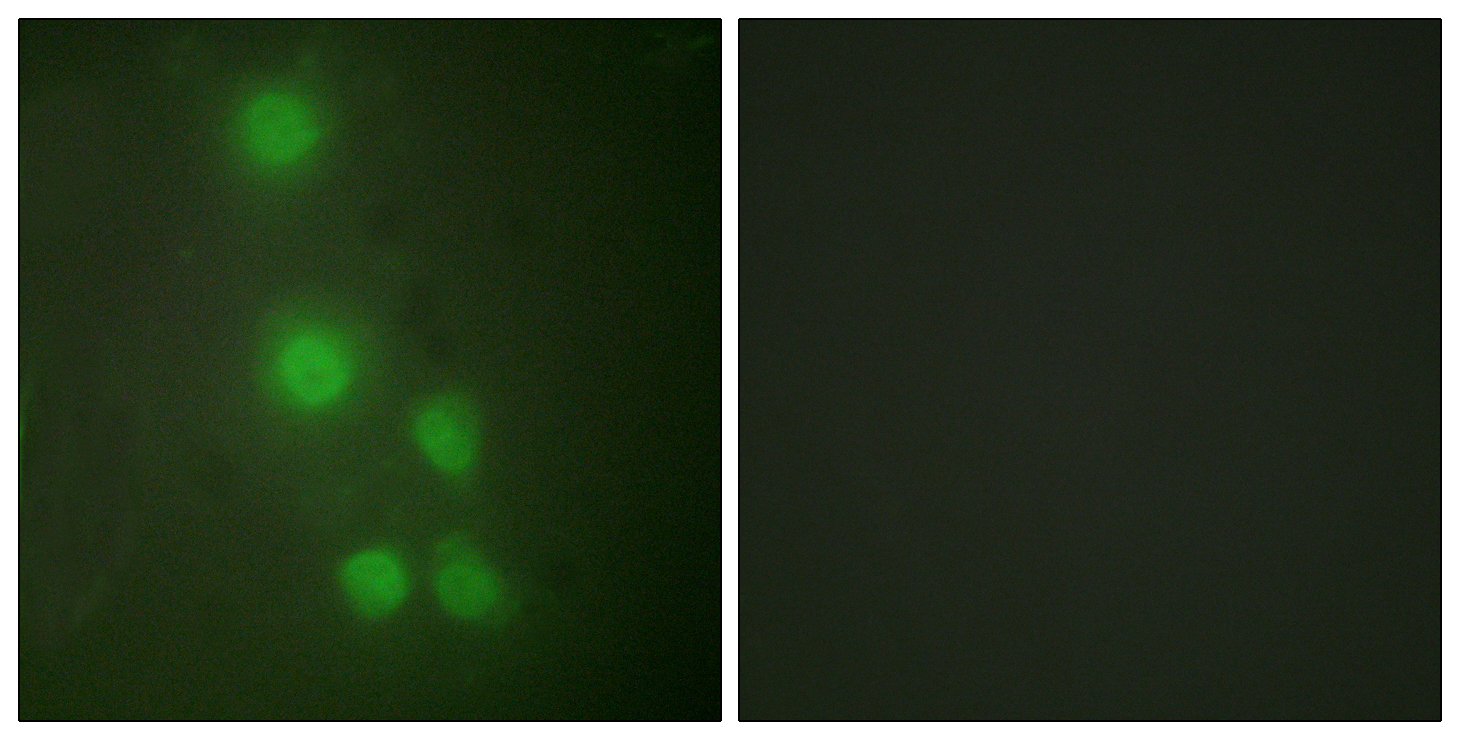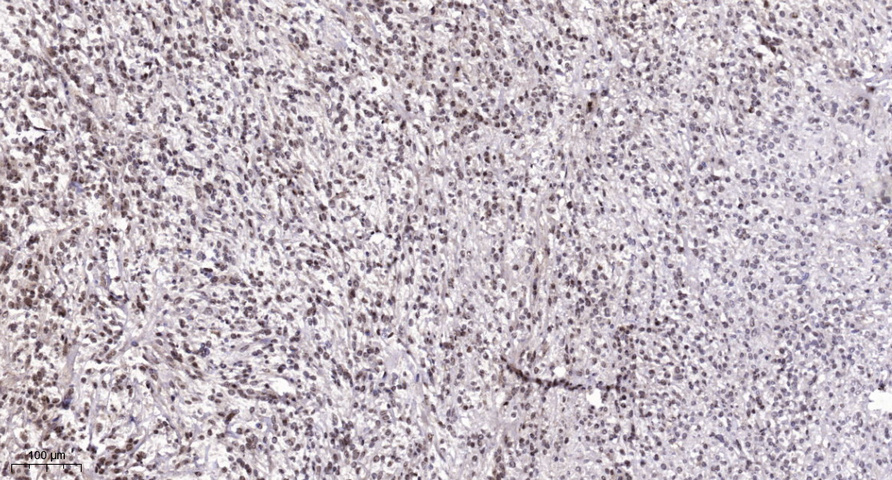BAF53 Polyclonal Antibody
- Catalog No.:YT0439
- Applications:WB;IHC;IF;ELISA
- Reactivity:Human;Mouse;Rat
- Target:
- BAF53
- Fields:
- >>Thermogenesis;>>Hepatocellular carcinoma
- Gene Name:
- ACTL6A
- Protein Name:
- Actin-like protein 6A
- Human Gene Id:
- 86
- Human Swiss Prot No:
- O96019
- Mouse Gene Id:
- 56456
- Mouse Swiss Prot No:
- Q9Z2N8
- Immunogen:
- The antiserum was produced against synthesized peptide derived from human ACTL6A. AA range:201-250
- Specificity:
- BAF53 Polyclonal Antibody detects endogenous levels of BAF53 protein.
- Formulation:
- Liquid in PBS containing 50% glycerol, 0.5% BSA and 0.02% sodium azide.
- Source:
- Polyclonal, Rabbit,IgG
- Dilution:
- WB 1:500 - 1:2000. IHC 1:100 - 1:300. IF 1:200 - 1:1000. ELISA: 1:10000. Not yet tested in other applications.
- Purification:
- The antibody was affinity-purified from rabbit antiserum by affinity-chromatography using epitope-specific immunogen.
- Concentration:
- 1 mg/ml
- Storage Stability:
- -15°C to -25°C/1 year(Do not lower than -25°C)
- Other Name:
- ACTL6A;BAF53;BAF53A;INO80K;Actin-like protein 6A;53 kDa BRG1-associated factor A;Actin-related protein Baf53a;ArpNbeta;BRG1-associated factor 53A;BAF53A;INO80 complex subunit K
- Observed Band(KD):
- 47kD
- Background:
- This gene encodes a family member of actin-related proteins (ARPs), which share significant amino acid sequence identity to conventional actins. Both actins and ARPs have an actin fold, which is an ATP-binding cleft, as a common feature. The ARPs are involved in diverse cellular processes, including vesicular transport, spindle orientation, nuclear migration and chromatin remodeling. This gene encodes a 53 kDa subunit protein of the BAF (BRG1/brm-associated factor) complex in mammals, which is functionally related to SWI/SNF complex in S. cerevisiae and Drosophila; the latter is thought to facilitate transcriptional activation of specific genes by antagonizing chromatin-mediated transcriptional repression. Together with beta-actin, it is required for maximal ATPase activity of BRG1, and for the association of the BAF complex with chromatin/matrix. Three transcript variants that encode two different protein
- Function:
- function:Involved in transcriptional activation and repression of select genes by chromatin remodeling (alteration of DNA-nucleosome topology). Required for maximal ATPase activity of SMARCA4/BRG1 and for association of the SMARCA4/BRG1 containing remodeling complex BAF with chromatin/nuclear matrix. Component of the NuA4 histone acetyltransferase (HAT) complex which is involved in transcriptional activation of select genes principally by acetylation of nucleosomal histones H4 and H2A. This modification may both alter nucleosome - DNA interactions and promote interaction of the modified histones with other proteins which positively regulate transcription. This complex may be required for the activation of transcriptional programs associated with oncogene and proto-oncogene mediated growth induction, tumor suppressor mediated growth arrest and replicative senescence, apoptosis, and DNA re
- Subcellular Location:
- Nucleus .
- Expression:
- Brain,Epithelium,Placenta,Skin,Spleen,Testis,
- June 19-2018
- WESTERN IMMUNOBLOTTING PROTOCOL
- June 19-2018
- IMMUNOHISTOCHEMISTRY-PARAFFIN PROTOCOL
- June 19-2018
- IMMUNOFLUORESCENCE PROTOCOL
- September 08-2020
- FLOW-CYTOMEYRT-PROTOCOL
- May 20-2022
- Cell-Based ELISA│解您多样本WB检测之困扰
- July 13-2018
- CELL-BASED-ELISA-PROTOCOL-FOR-ACETYL-PROTEIN
- July 13-2018
- CELL-BASED-ELISA-PROTOCOL-FOR-PHOSPHO-PROTEIN
- July 13-2018
- Antibody-FAQs
- Products Images

- Immunofluorescence analysis of HUVEC cells, using ACTL6A Antibody. The picture on the right is blocked with the synthesized peptide.

- Western blot analysis of lysates from Jurkat and COLO205 cells, using ACTL6A Antibody. The lane on the right is blocked with the synthesized peptide.

- Immunohistochemical analysis of paraffin-embedded human Colon cancer. 1, Antibody was diluted at 1:200(4° overnight). 2, Tris-EDTA,pH9.0 was used for antigen retrieval. 3,Secondary antibody was diluted at 1:200(room temperature, 45min).



